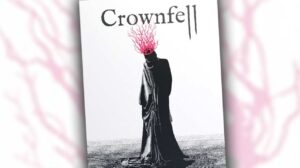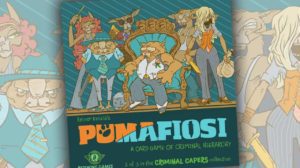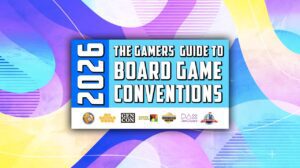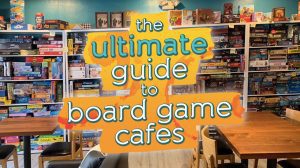Disclosure: Meeple Mountain received a free copy of this product in exchange for an honest, unbiased review. This review is not intended to be an endorsement.
From the moment I first played Small World back in 2013, I’ve been partial to area control as a mechanism. It is a personal favorite. El Grande, Ginkgopolis, Kemet, and Ankh, to name only a few, all rank among my favorite games, and I’m always happy to sit down to a new one. Having put hundreds of hours of my life into thinking about these things, I can now tell you that I enjoy area control because I enjoy the interaction inherent in the form and the mix of tactics and strategy the mechanic encourages. Fundamentally, I like putting guys places and then scoring points for putting more of them there than you. I’m a simple man.
The problem with area control is that it doesn’t translate well to two players. Some area control games play exceptionally well at two—Ankh is best that way—but most of them fall flat without multivalent player inputs. You need the chaos, the churn, the tumult. There aren’t many two-player specific area control games, and what few there are—The Rose King is all that comes to mind off the top of my head, and that’s a deep cut—tend to feel like dry abstract games rather than something with some sweep.
Moytura, from the formidable design team of David Thompson & Trevor Benjamin, provides an inspired answer to this conundrum. With this design, they’ve figured out how to capture the scale and uncertainty of higher player counts in a two-player design. How do you design a two-player area control game that doesn’t feel like a two-player area control game? It’s simple, dear friends:
You add a third player.
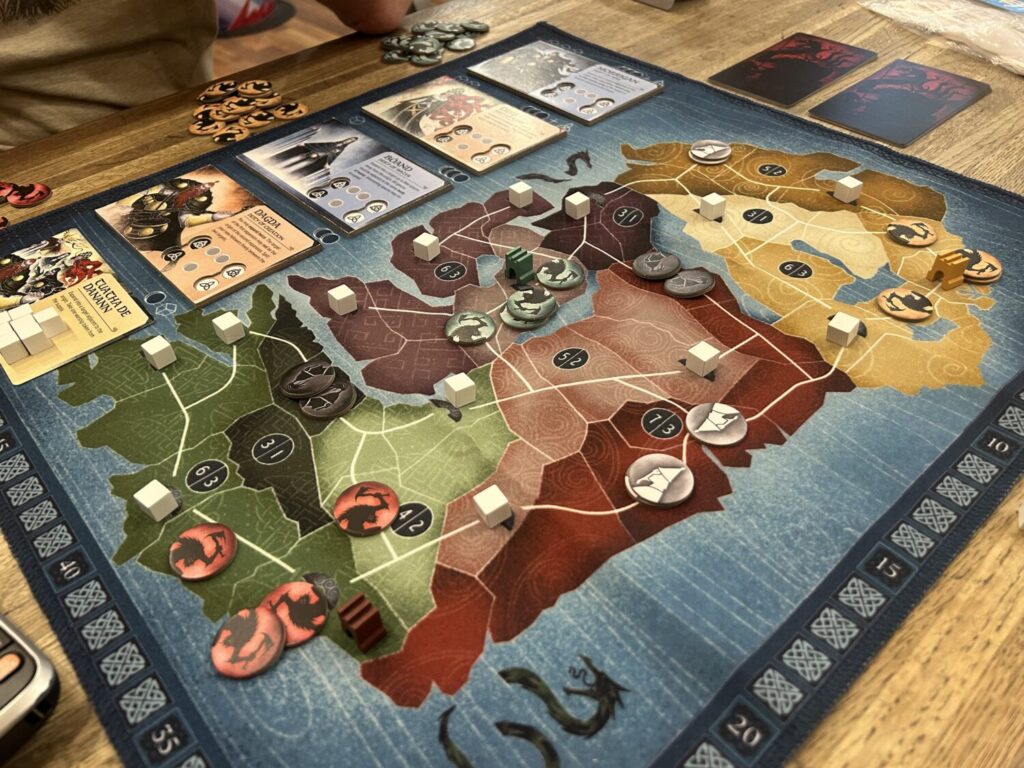
Queue Go First
I don’t know much about Irish mythology outside of what Cartoon Saloon teaches me in their movies, but the Internet—bless—tells me that the Battle of Moytura, or Cath Maige Tuired, comes from the chronicles of the Tuatha Dé Denann, a supernatural race that seems to have been Ireland’s answer to the Inhumans. The Mythological Cycle includes two Battles of Moytura, but Moytura the game seems to concern itself only with the second. Here, two rival factions within Tuatha Dé Denann struggle for control of the island while also fighting to keep various monstrous invaders under wraps.
On your turn, you pick one of five available actions in the queue. They all allow you to place troops in accordance with different restrictions. The default deploy action, the Tuatha Dé Denann card, lets you place one troop in an adjacent space to the troops you already have on the mat. The others are more fun. Bóand lets you deploy to spaces far across the water, while Morrigan helps you lay waste to surrounding opponents. Ériu skips over spaces, and Dagda lets you expand twice. When you select any of the advanced actions, they move to the top of the queue, making them both more powerful and more expensive for players to use.
There’s something about the action market here that doesn’t work for me. It’s not bad. It’s a fine system, entirely functional, and the rotation of the actions does prevent you from taking the same action again and again, which is good, but. It is tactical to the point that decisions can often feel arbitrary. “I’ll do that one because it’s free.” Across several games of Moytura, I rarely if ever chose actions with the long term ebb and flow of the market in mind. I wish there were more of a sense of the bigger picture there. I’ve yet to even pick an action to deprive my opponent of it, which feels like something you’d want in this sort of game.
Once each player has taken a single action, the baddies get a go. Rather than a third corporeal player—could God himself create a two-player game that requires three players?—Thompson and Benjamin have spiced up proceedings with a bot. While the word “bot” threatens flowcharts and complicated implementation, these designers are too seasoned for that. You flip over the top card of the deck, which will be either a Level I or a Level II card for one of the three enemy groups on the board, and expand according to the rules for that faction. The default opponents, the Fomorians, expand along the island’s infrastructure. More complex baddies follow their own distinct rules.
Any time you end up in the same space as an enemy, you fight to the death. One unit for each side is removed until only one army remains. It’s nice and simple. In an interesting twist, you are not allowed to move into spaces occupied by the other player. This is a competitive game, but your two factions are still fighting on the same side. That may come as a disappointment to some people in the potential audience, but it presents its own enjoyable opportunities. Using Bóand and Ériu, you can situate yourself behind a firewall of your opponent’s pieces, knowing your soldiers will sleep safe and sound while the other guy does all the hard work.
After five rounds, the first wave of scoring takes place. For each region of the board, the factions with the highest and second-highest number of troops score points. That includes the bots, who score as a combined faction. It is possible for them to win the game. In my experience, in fact, it is extremely possible for them to win the game, so you and your opponent have to work together to keep them suppressed. Figuring out the best places to strike, and balancing those concerns against your long-term scoring potential, can be very satisfying.
Then Again, Maybe Bot
I admire Moytura more than I personally enjoy it as a game. Something about it leaves me feeling a little cold. It took me some time to figure out what wasn’t clicking, but I got there: my opponent and I aren’t stepping on each another’s toes enough. The bots score so well and so consistently that you’re forced to dedicate most of your energy to quashing them. Because they are bots, and their behavior is relatively predictable, outsmarting them doesn’t feel all that satisfying. At least not to me. Though I absolutely adore David Thompson’s solo games, having someone else at the table with whom I’m not interacting all that much while I focus on these bots is a little disappointing.
I know that’s the problem because the high points, consistently, are the moments when an opening for a potshot against my human opponent presents itself. Placing soldiers behind my opponent, like I mentioned before, is gleeful. I once found myself in a strong enough position at the end of the game that I was able to “waste” a turn sending a literal boatload of troops to an all-but-empty high-value region, stripping my opponent of four points and gaining seven myself. The problem is, for the most part, you have to tend to the bots rather than the other player.
That will work like gangbusters for a lot of people. I have not had a chance to play Moytura with kids, but I have to imagine that playing this with a 12 year old would be incredible fun. As an act of design work, it is characteristically crackerjack. Thompson and Benjamin are responsible for War Chest and the Undaunted series, among many others. They know how to make a two-player game, and they have brought all of that experience to bear here. Moytura represents a crack in the side of area control games. There may be an entire chamber off to the side that we didn’t know about. This is a great first step, and I can’t wait to see what other games we find in there.




